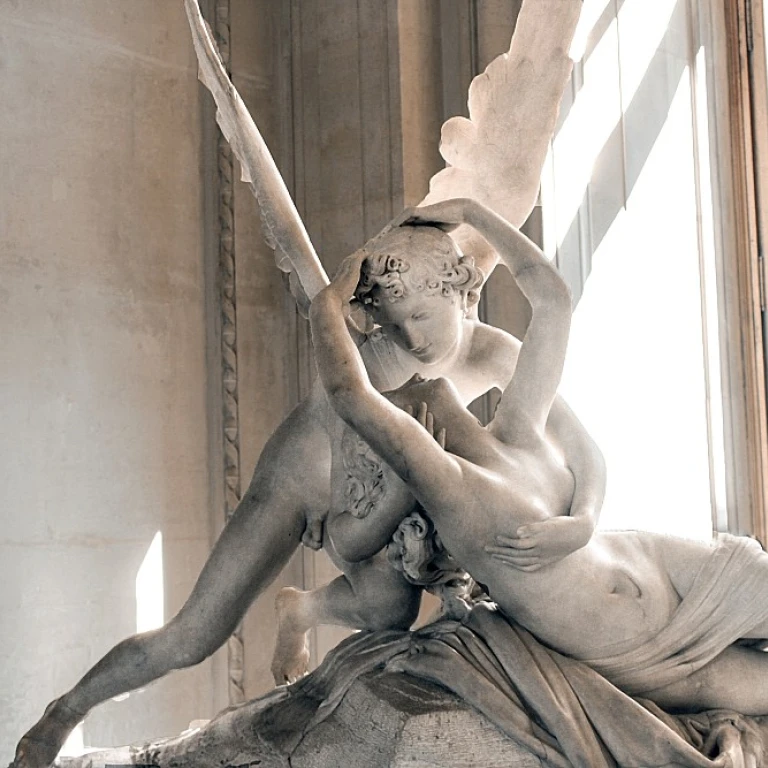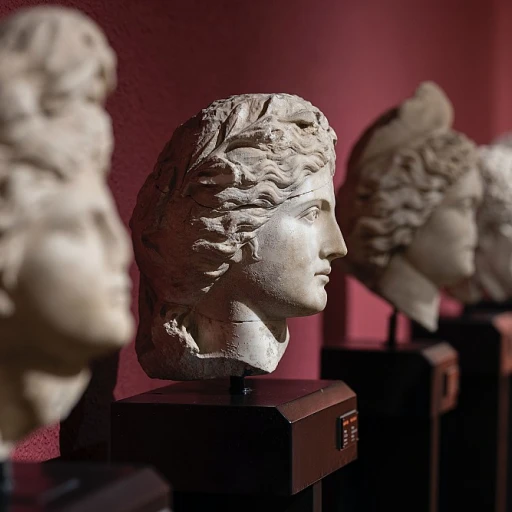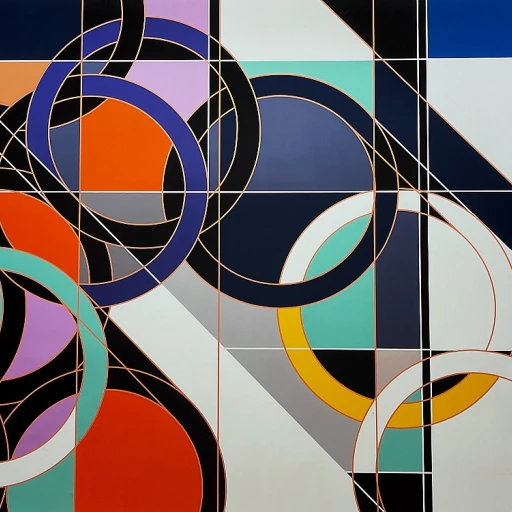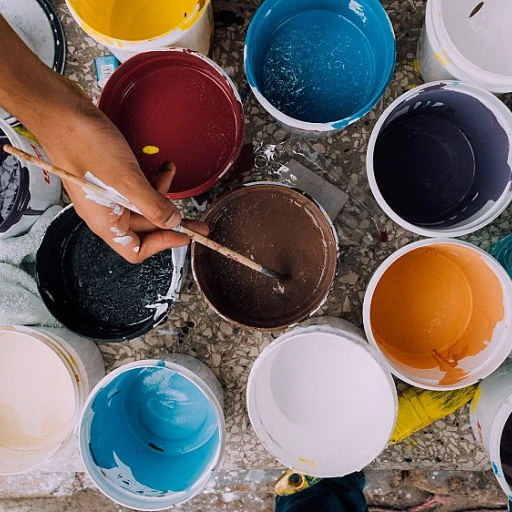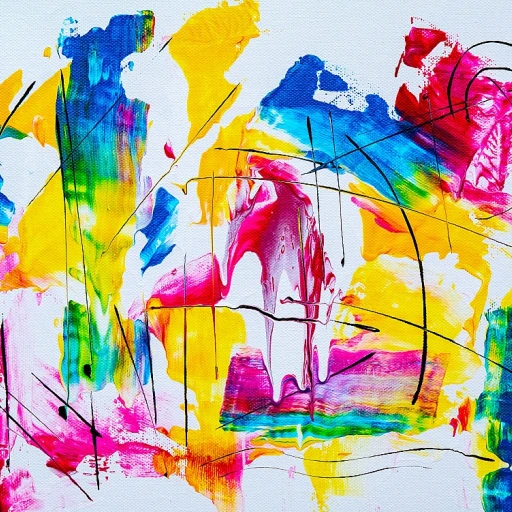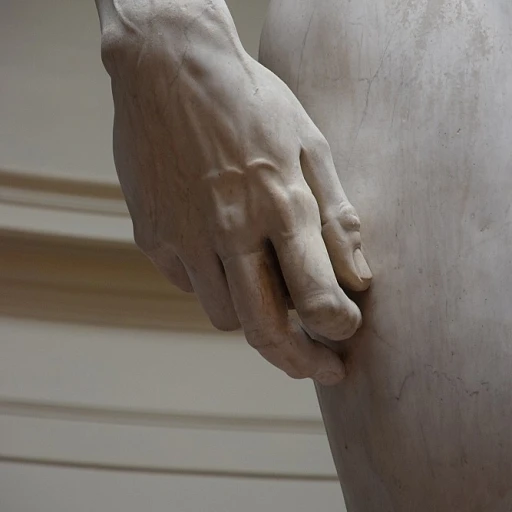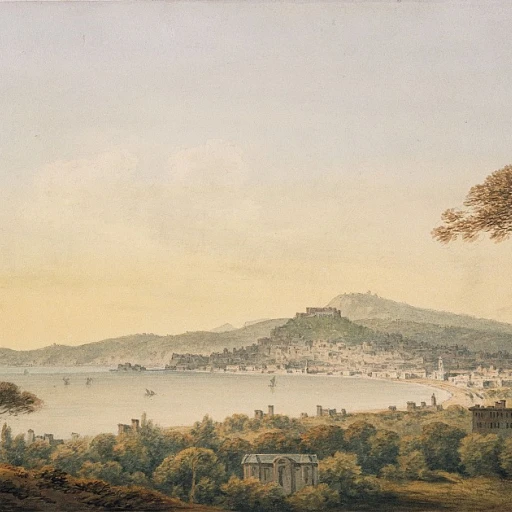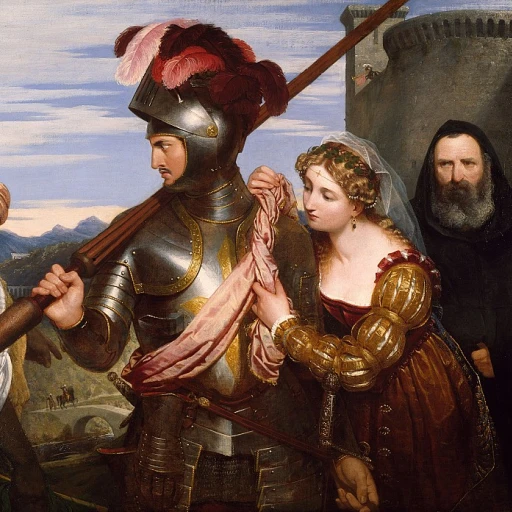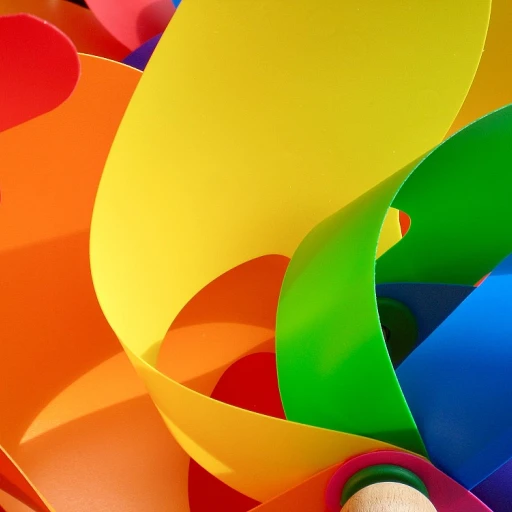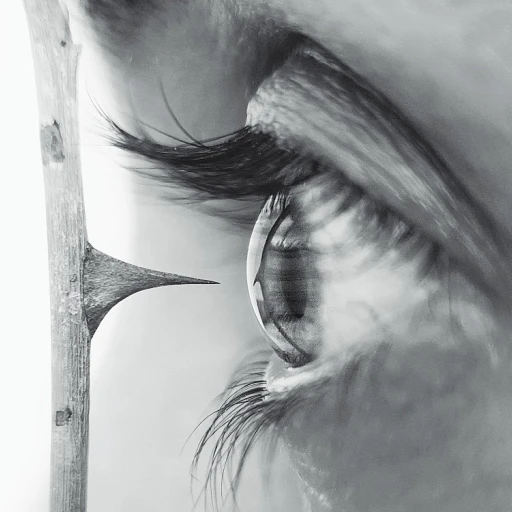-teaser.webp)
The Essence of Classic Portraits
Captivating Realism and Timeless Charm
Classic portraits possess an indefinable charm that speaks to generations, transcending the fleeting nature of contemporary trends. These works of art, whether it be the delicate capture of a young woman’s expression or the profound pensive gaze of a portrait lady, offer a window into a bygone era. The allure lies in their ability to encapsulate the essence of the subjects, revealing intimate details that demand a lingering view. The pristine techniques of portrait painting convey not just an image, but an evocative narrative that enriches our understanding of classical art. Traditional art forms, such as those seen in the works of Johannes Vermeer’s "Girl with a Pearl Earring" or Leonardo da Vinci's iconic "Mona Lisa," masterfully employ oil painting techniques that highlight the natural details of the subjects. Elements such as lighting, intricate brushwork, and the nuanced hues of oil paints contribute to a vibrant yet subtle depiction that draws viewers into an experience of both beauty and contemplation. Within this artistic realm, artists like Gustav Klimt and Vincent van Gogh utilized their distinctive styles to reinterpret classic motifs. Their contributions highlight the lasting relevance of portrait art, proving its adaptability and continued appeal. In modern times, the meticulous creation of a classic portrait is not just appreciated for its aesthetic appeal, but also as a lucrative and enduring investment. As with any significant additions to a luxury collection, understanding the historical and monetary value—often exemplified by the works hanging in an esteemed gallery—is crucial. For those considering this path, exploring the "investing in Renaissance masterpieces" is enlightening, illuminating the reasons classic portraits have retained their esteemed status in the art world. The fusion of historical resonance, artistic mastery, and modern market significance establishes classic portraits as a captivating, timeless facet of luxury art—a tradition that continues to captivate collectors and enthusiasts alike.Historical Significance in Art
Exploring the Historical Landscape of Portraits
The art of the portrait has carved an indelible mark in the annals of artistic history. Its significance is timeless, capturing the essence of both the sitter and the era they inhabited. Classic portrait art serves as a mirror, reflecting the social, political, and cultural milieu of its time. This inherent quality makes each painting not just a representation of a subject, but a narrative of an age.The profound value of historical portraits is seen through their ability to convey stories across generations. From the meticulously painted details of a portrait lady to the broader strokes seen in oil painting masterpieces, each image tells a unique tale. Renowned artists have immortalized these narratives using various styles and techniques, creating pieces that transcend time.
Consider the portraits from the rich tapestry of Classical Art. In each brushstroke, one can observe the evolution of artistic techniques and cultural norms. Whether it is the golden hues of a Gustav Klimt piece or the soft play of light in a painting by a luminary such as Johannes Vermeer, the historical significance of these portraits cannot be understated.
For many art enthusiasts, the allure lies not just in the beauty of the paintings, but in the stories they inspire. As a viewer stands before a classic portrait, they are not only admiring artistic skill but connecting with a shared heritage. This connection is one reason why classic portraits continue to captivate and inspire those who appreciate the allure of elegant nude artistry and those new to the luxury art world alike. The combinations of oil and print in these portraits create captivating images that remain relevant, offering insights into their inception while maintaining relevance in today’s art galleries.
Techniques and Mastery
Mastering the Art of Classic Portraiture
Classic portraits have long been celebrated for their intricate techniques and the extraordinary skill set required to create such breathtaking works of art. The use of oil paint is prevalent in these masterpieces, allowing artists to achieve a certain depth and richness in their paintings that other mediums simply can't replicate. This technique, often observed in the captivating works of Johannes Vermeer and Jacques-Louis David, brings life to the details of the woman's visage, rendering each portrait as an exquisite monument to art's enduring legacy. Painters rely on a combination of traditional and advanced techniques to capture the essence of their subjects. The chiaroscuro method, the contrast between light and dark, provides a sense of volume and space in the painted image. This approach, famously utilized by masters like Leonardo Da Vinci in the iconic Mona Lisa, continues to enchant viewers even today. The mastery involved in creating a timeless portrait does not only lie in painting; the surrounding elements also play a vital role. The use of gold leaf, for instance, often elevates a portrait to a regal status, reminiscent of paintings found in an opulent gallery. The interplay of natural light on the gold adds a shimmering effect that draws the view into the portrait's depth. Artists such as Claude Monet, renowned for his treatment of light, demonstrated such prowess by capturing the fleeting moments of beauty in his subjects. These classic portraits are more than mere representations; they are narratives told through paint. They engage the viewer with stories of young women or the nuanced expressions of a portrait lady, often inviting audiences to uncover the hidden layers beneath the visible surface. Works like those by Gustav Klimt reveal subjects in a manner that balances opulence with intimacy. For those passionate about amassing art or learning more about the nuanced art of portraiture, understanding these techniques is essential. Art enthusiasts can further explore the nuances of elegance in family portrait sketches at this luxury art blog post.The Market for Luxury Portraits
Exploring the Luxury Portrait Market
Navigating the world of luxury art encompasses a journey through history, elegance, and timeless beauty. In the classic portraits market, the allure of original art pieces holds value that extends far beyond their aesthetic appeal. The demand for these exquisite works manifests in auction houses and galleries, where remote buyers vie for the privilege of owning a masterpiece. The price of a portrait painting can vary widely, influenced by the artist's prestige, historical significance, and the painting’s condition. These attributes ensure that certain pieces, like those from the realms of classical art, remain perennial favorites among collectors. For investors, classic portraits represent both a safe and lucrative realm. These portraits, often done in oil or with meticulous details, capture not just a face but the essence of an era. Whether it's a painting intricately done in the golden tones reminiscent of certain celebrated masterpieces or portraits encapsulating the natural aura of a young woman, each piece offers a timeless image reflective of a specific time in history. Acquiring such paintings requires more than financial capability; it calls for a deep appreciation of the technical mastery involved in each stroke, something that can be paralleled to the works of luminaries like Vincent van Gogh or the delicate rendering of details in Johannes Vermeer’s famed "Girl with a Pearl Earring". Additionally, original portraits by renowned artists carry an inherent historical significance, often depicted at premium USD pricing due to their rarity and the perceived value of the classic art genre. Collectors often explore both public and private avenues. Whether in a formal gallery or at auction houses, elite buyers seek pieces that evoke an emotional response, much in the way the "Mona Lisa" does with her enigmatic smile. The artworks' visual narrative is captured through portrait images that often involve a woman painted in intricate detail, perhaps even reminiscent of the exquisite work of artists like Jacques Louis or Gustav Klimt’s ornate style. In contemporary times, modern interpretations of these classic painted works continue to thrive, merging past techniques with new styles. High-quality print reproductions of these classic portraits allow wider audiences to appreciate their grandeur, but it's the original art that continues to captivate the discerning collector. Within this sphere, every stroke of oil painting immortalizes the cultural legacy, making classic portraits a revered form of luxury art investment.Modern Interpretations
Modern Takes on Artistry
Classic portraits hold a timeless appeal, but their enduring essence hasn't stagnated in the confines of history. Modern interpretations emphasize the continuous evolution within the art world, capturing the zeitgeist of contemporary aesthetics while drawing inspiration from the rich tapestry of past epochs. The shift towards incorporating technology in art has opened new avenues for artists to explore creative realms. The advent of digital tools allows for the recreation of classic portraits in a manner that's both innovative and respectful of tradition. Through digital platforms, artists can manipulate images, experiment with textures reminiscent of classic oil paintings, and create an interactive experience that is revealing and engaging. However, it’s not just technology altering the way we view these portraits. New mediums and materials, like graphite and mixed media, add layers that elevate the dimensions of a classic portrait. A young woman, for instance, depicted in a digital painting might evoke the grace and mystery akin to the "girl with a pearl earring," while introducing a contemporary twist unimagined by traditionalists. Modern artists also revisit themes explored by masters like van Gogh and Gustav Klimt, with an eye to reflect on current societal narratives. Whether it's a striking portrait of a lady that echoes Klimt's golden intricacies or a more subdued, yet emotive oil rendering reminiscent of a Monet, these interpretations stand as a testament to the dynamic evolution of portrait painting. The enduring fascination with figures like the Mona Lisa reveals our perpetual quest for capturing the essence of humanity, and it's through modern renditions that each generation leaves its mark. Contemporary galleries, too, are blending old and new, where original paintings rest alongside modern prints. As prices soar into the millions of USD for classic portraits, reproductions and derivative works make art accessible, maintaining the aura of luxury without the unattainable price tag. The natural beauty of a woman painted anew can reveal intricate details that digital prints capture with precision. Today's luxury artwork market encourages collectors to view not only the historical significance but the potential of modern interpretations within classical art genres. These pieces are not merely reproductions; they are innovative interpretations that honor the timeless allure of portrait art, bridging the past with the present.Collecting and Preserving Classic Portraits
Safeguarding the Legacy of Timeless Portraits
Preserving classic portraits is an endeavor that requires a deep understanding of their intrinsic value, both in terms of historical significance and their market appeal. These exquisite paintings, whether oil masterpieces or finely detailed prints, often feature iconic subjects like a young woman or the enigmatic charm of the mona lisa, and their preservation ensures that future generations can view and appreciate them.
Collectors and galleries play a critical role in maintaining the integrity of these pieces. The financial investment involved in classic portraiture, including works reminiscent of vincent van styles or gustav klimt impressions, necessitates meticulous care in handling and conserving these artworks. From controlling environmental factors like humidity and light to employing techniques that prevent natural deterioration, each portrait requires specific attention tailored to its medium, be it oil painting or another art form.
The market for classic portraits is marked by its vibrancy and demand, where a portrait painting associated with names akin to jacques louis can command high usd prices. This economic significance is intertwined with the aesthetic appreciation of these art pieces, noting their classical art details and the vivid portrayal of woman portraits that transcends time.
For collectors, acquiring such a period piece means embracing an art form so rich in history, it's almost a living narrative. Exhibitors at esteemed galleries offer platforms for enthusiasts to view these paintings, ensuring that the story of each brushstroke, whether echoing the charm of a girl pearl or an elegantly painted portrait lady, continues to live on. Collecting these artworks is not solely about owning an original or a nuanced portrait classic, but also about partaking in the preservation of our shared cultural heritage.
In the end, protecting these invaluable images is about more than sustaining a market; it's about upholding a tradition where art bridges past and present, embodying timeless beauty and intellectual enrichment.

